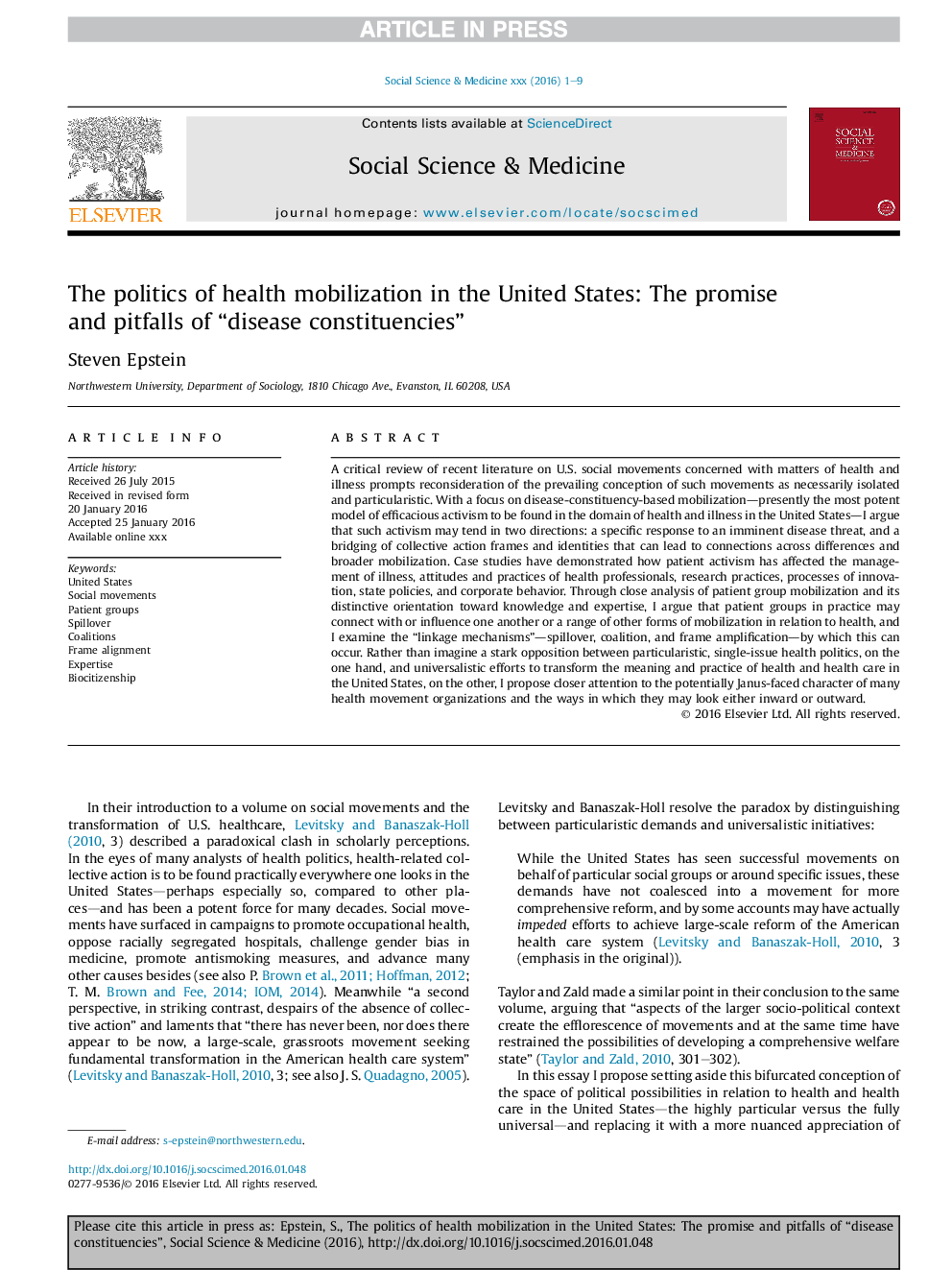| Article ID | Journal | Published Year | Pages | File Type |
|---|---|---|---|---|
| 7329356 | Social Science & Medicine | 2016 | 9 Pages |
Abstract
A critical review of recent literature on U.S. social movements concerned with matters of health and illness prompts reconsideration of the prevailing conception of such movements as necessarily isolated and particularistic. With a focus on disease-constituency-based mobilization-presently the most potent model of efficacious activism to be found in the domain of health and illness in the United States-I argue that such activism may tend in two directions: a specific response to an imminent disease threat, and a bridging of collective action frames and identities that can lead to connections across differences and broader mobilization. Case studies have demonstrated how patient activism has affected the management of illness, attitudes and practices of health professionals, research practices, processes of innovation, state policies, and corporate behavior. Through close analysis of patient group mobilization and its distinctive orientation toward knowledge and expertise, I argue that patient groups in practice may connect with or influence one another or a range of other forms of mobilization in relation to health, and I examine the “linkage mechanisms”-spillover, coalition, and frame amplification-by which this can occur. Rather than imagine a stark opposition between particularistic, single-issue health politics, on the one hand, and universalistic efforts to transform the meaning and practice of health and health care in the United States, on the other, I propose closer attention to the potentially Janus-faced character of many health movement organizations and the ways in which they may look either inward or outward.
Related Topics
Health Sciences
Medicine and Dentistry
Public Health and Health Policy
Authors
Steven Epstein,
